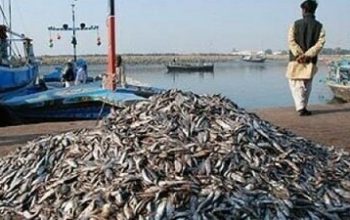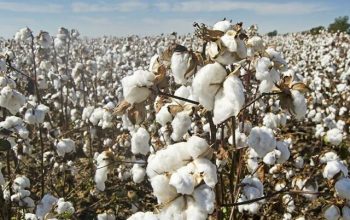EDITORIAL: Pakistan Bureau of Statistics (PBS) released two positive macroeconomic indicators this Friday past – rise in exports and large-scale manufacturing (LSM) sector.
Economists no doubt will zero in on three aspects of the trade data: (i) the subject title was advance release on external trade statistics for the month of August 2024, which implies provisional data, and this has been noted by the PBS in its narrative – a decision perhaps taken to disseminate a feel-good factor in the performance of the economy.
In addition, State Bank of Pakistan that also uploads trade data has not updated this item on its website since July this year; (ii) the format is different from previous months with exports and imports not provided for easy comparison in one table. Be that as it may, total provisional exports were estimated at 5.069 billion dollars July-August 2024, against 4.430 billion dollars in the same period of last year (a rise of 14.42 percent this year compared to the year before), though imports rose to 8.750 billion dollars this year compared to 8.165 billion dollars in the same period of last year or, in other words, the trade deficit rose from 3.735 billion dollars July-August last year to 4.32 billion dollars this year – a rise of nearly 16 percent. This would have to be filled by workers’ remittance inflows (estimated at 5936.8 million dollars in July-August 2024); however, money is fungible and given the massive external repayments due this fiscal year the government’s reliance on external borrowings will remain high; and (iii) the detailed commodity exports table does not combine the July-August figures and compares August this year with August last year and fails to provide July 2023 data.
However, rice exports (basmati) rose massively in August 2024 in quantity – 28.5 percent higher than in July 2024 and 106 percent higher than August 2023; however, this is unlikely to be sustained as India has now altered its strategy in relation to export of rice. Initially banned in July last year, exports have now started to various countries under set conditions.
Textiles exports are shown to have increased; however, quantity increased in knitwear, bedwear and towels and plummeted in cotton yarn. And what must be deeply concerning is that petroleum products actually declined in quantity – from 994,210 metric tonnes (mt) in August 2023 to 825,661 mt in July 2024 to only 609,382 mt in August 2024. Or, in other words, the general public continues to reduce its fuel intake in spite of lower inflation data released by the PBS due to eroding income of the salaried class as consequence of higher taxes – direct and indirect.
LSM registered negative 2.08 percent in July 2024 compared to June 2024 while its growth is cited at 2.38 percent year-on-year. This implies that the uptick in manufacturing that was projected in the Monetary Policy Statement of 12 September 2024 and its claims that “the latest business sentiment surveys also support this assessment of a moderate pick-up as manufacturing firms reported increased capacity utilisation during the past couple of waves” has not quite panned out.
And neither has the claim made in the August Update and Outlook released by the Finance Division, claiming that “the LSM sector is projected to sustain positive growth trajectory in FY2025 — on the back of improved external demand, stable exchange rate, receding inflation and easing of monetary policy.”
While one can understand the government’s motive in projecting positive sentiments for after all sentiments do stimulate markets yet the issue has become one of delays in the implementation of meaningful reforms.
The government appears to consider the scheduled IMF Board meeting date to consider the 7 billion dollars Extended Fund Facility (EFF) on which a staff-level agreement was reached more than two months ago on 12 July this year as an accomplishment in itself; however, this sentiment is not shared by the public at large owing to a variety of reasons such as high poverty levels in Pakistan (41 percent last year as per the World Bank), and static salaries in the private sector (though the 7 percent employed by the government have received a hefty pay rise at the taxpayers’ expense) coupled with higher income tax effective this year. These factors, no doubt, have impaired the ability of middle-income earners in particular to sustain their quality of life.
This newspaper has repeatedly urged the elite, defined as the major recipients of current budgeted expenditure, to voluntarily slash their budgeted outlays, but so far there is no concrete evidence of such a move.
There is talk of austerity measures and large-scale privatisation of government-owned entities but again this is in terms of cabinet approvals and pledges by concerned departments/ministries, elements that have been on display for the past decade and a half.
The government must understand that it no longer has the luxury of postponement of these politically unsavoury decisions in view of the fact that the mood of the public is nearly at boiling point — the point at which anger breaks out into violent expression.
Copyright Business Recorder, 2024
Read the full story at the Business Recorder - Latest News website.



